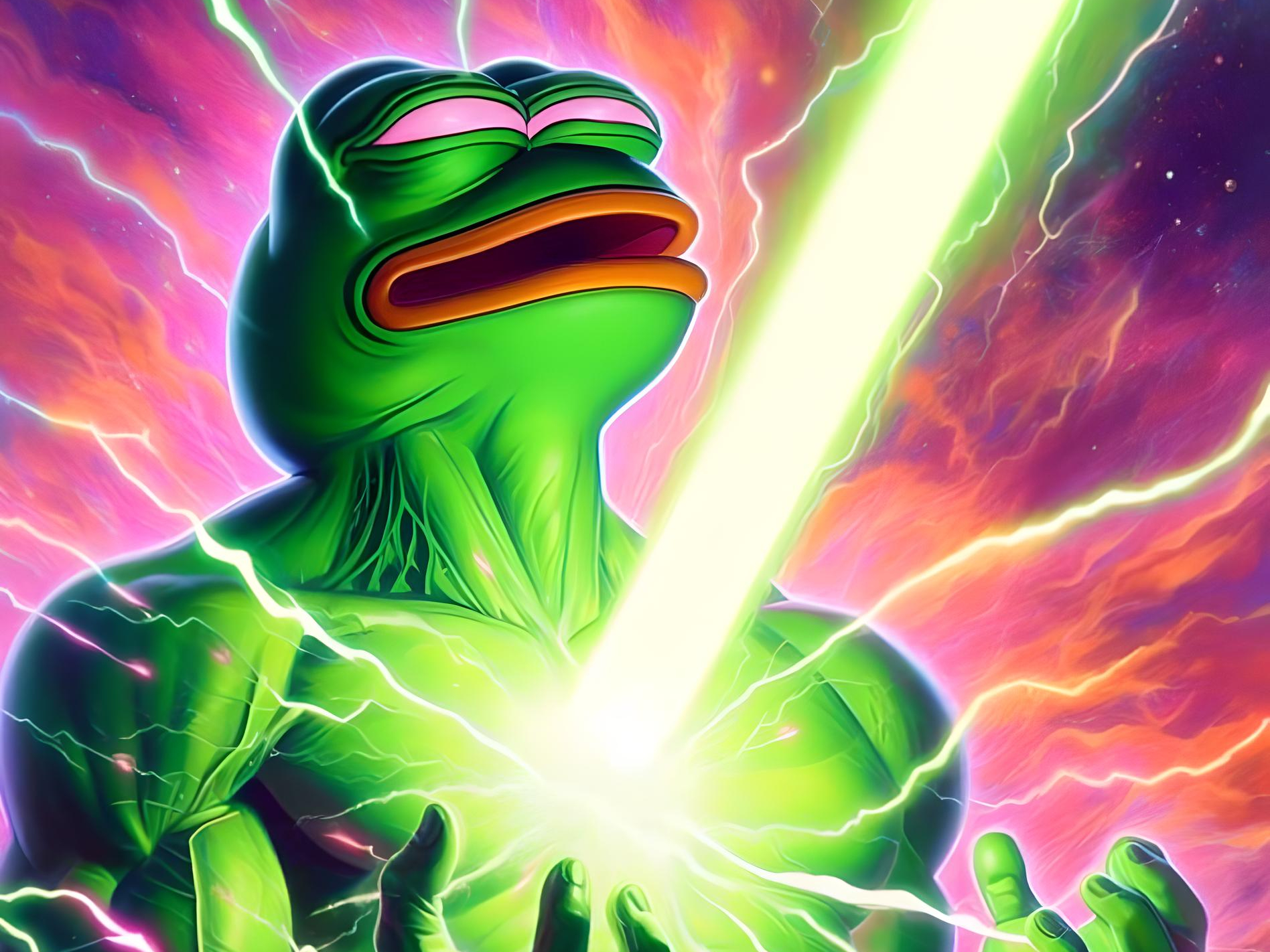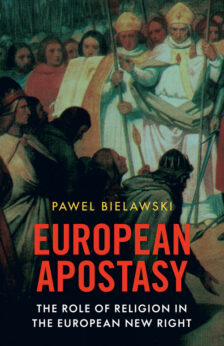Dark times reign in Nippon. Increasingly, shoguns — the leaders of the samurai warrior nobility — are being threatened by an internal enemy: a mysterious sect of snake worshippers, led by the sinister sorcerer Orochimaru. This sect infiltrates the provinces, using conspiracy, rebellion, deceit, and war to gradually seize control of the Land of the Rising Sun. The principalities of Tsukikage, Ogata, and Matsuura have already fallen — and with their power behind him, the dark magician now aims to claim the imperial throne.
However, he does not suspect that the heirs of the Ogata and Matsuura families, Hiroyuki and Tsunade, who survived a treacherous assassination attempt by the snake magician, have been found and trained in esoteric practices by a wise hermit and servant of a frog deity. Now, they set out to stop Orochimaru. But during the battle, Hiroyuki, who now goes by the name Jiraiya (“young thunder”), is bitten and poisoned by a snake. Tsunade must make a great sacrifice to save her companion.
The Ninja Legend
This is the tale told by the writer Kanwatei Onitake (1760–1818) in Jiraiya Goketsu Monogatari (The Tale of the Gallant Jiraiya). Written in 1806, it is one of the most famous ninja legends in Japan. Ninjas were specially trained warriors who were employed as spies or assassins. In contrast to the samurai, the shadow warriors fought in secrecy and were often considered dishonorable as a result.
Onitake’s heroic epic has been referenced extensively in popular culture. As early as 1839, it served as the basis for one of the first Japanese comic books, and in 1852, it was adapted into a play. In 1921, a silent film based on the legend was produced, and in 1966, the Toei Company brought it to the screen as a kaiju (monster) film under the title The Magic Serpent. In 1988, it was adapted as a TV series titled Sekai Ninja Sen Jiraiya (World Ninja War Jiraiya).
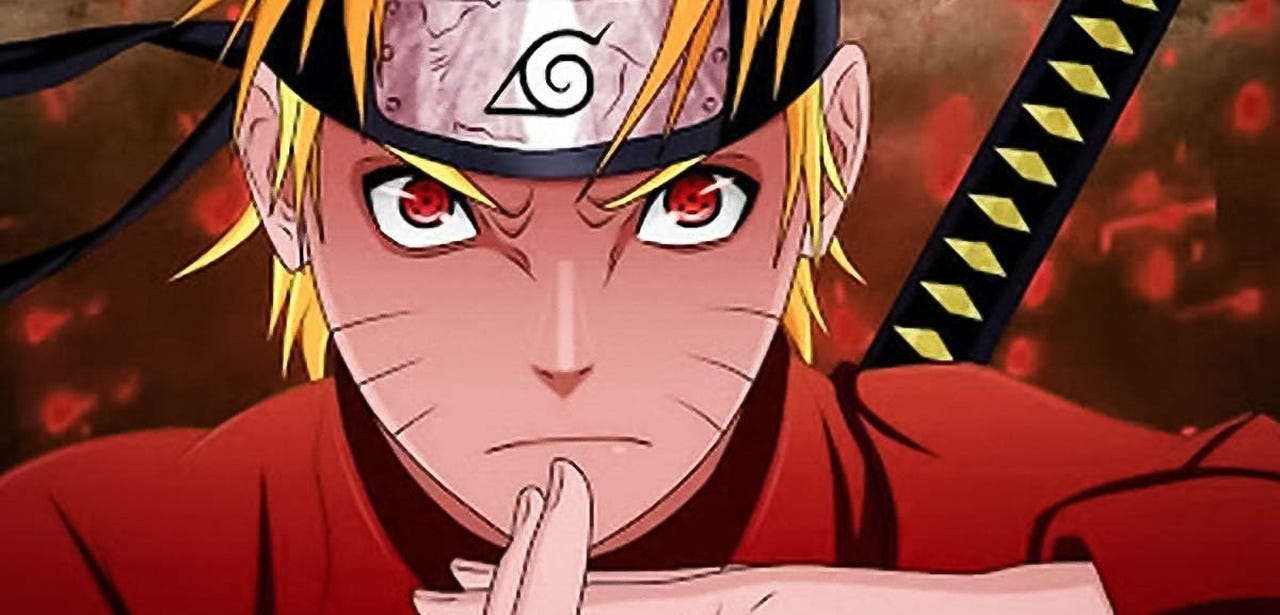
Modern Ninja: Naruto Uzumaki, the main character from the manga series ‘Naruto’ (1999–2014).
In Ninja Sentai Kakuranger (Ninja Squadron Kakuranger, 1994/95), known to us as the third season of Power Rangers, the gallant Jiraiya appears as a secondary character. In the manga series Naruto (1999–2014), the sorcerer Orochimaru is one of the main villains, while Tsunade and Jiraiya serve as mentors to the young ninja Naruto. The video game company SNK frequently refers to evil versions of their hero characters as “Orochi,” referencing the dark sorcerer. And in the Pokémon universe, there is a ninja frog based on the character of Jiraiya. The legend has also inspired many folk festivals, where the characters from the story are carried in processions through the villages.
The great dragon, the ancient serpent, who is called the devil or Satan, was cast down.
— Revelation of Saint John
Jiraiya Goketsu Monogatari is not even a purely Japanese work; its core is nearly identical to a story from China’s Song Dynasty (circa 960–1270). The wise hermit is based on Liu Haichan, a Taoist philosopher and well-known alchemist from China who traveled with a frog companion. Later legends saw this animal as the incarnation of a moon goddess.
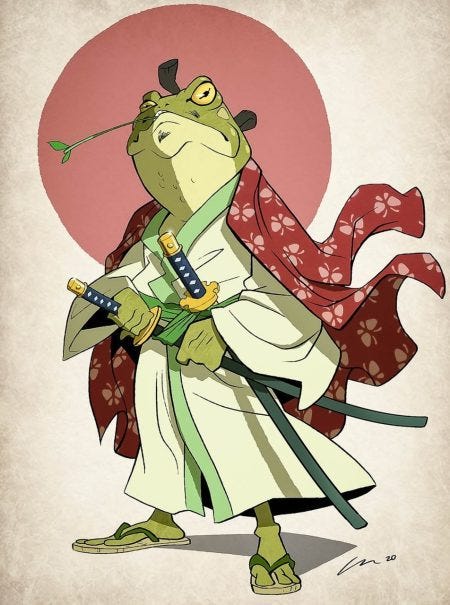
On the side of good: modern Japanese frog meme.
Gods and Demons
The frog has been regarded as a magical being in many ancient cultures, as it lives both on land and in water, serving as a kind of bridge between two elemental worlds.
In European fairy tales and legends, the frog often appears in witches’ brews or as an enchanted human, like the frog prince. Frogs are frequently symbols of fertility or good luck and a sign of a good harvest. Because they are nocturnal, they also became a symbol of ninjas, who fight in the shadows.
The idea of animal spirits as allies comes from shamanism. Additionally, ninjas used so-called ninpo techniques, which were modeled after the behavior of frogs, such as methods for distracting or surprising enemies.
This became mythologized, leading to the idea that ninjas had a spiritual connection to animal deities, who could take the form of frogs or be summoned during battle. Jiraiya himself calls upon a frog to shake off his pursuers.
The snake, on the other hand, is already known from the Bible as a symbol of evil. The Jiraiya legend bears remarkable parallels to the Book of Genesis, in which the serpent tempts Eve to eat the fruit from the Tree of Knowledge, leading to her and Adam’s expulsion from paradise by God. Onitake’s story also echoes a motif from the Book of Revelation: Satan, who is equated with both the serpent and the dragon, seeks to gain control over humanity through worldly servants like the Antichrist.
As stated in Chapter 12 of Revelation: “A great sign appeared in heaven: a woman clothed with the sun, with the moon under her feet, and a crown of twelve stars on her head. … Another sign appeared in heaven: a great red dragon, with seven heads and ten horns, and seven crowns on its heads.”
And further: “Then war broke out in heaven. Michael and his angels fought against the dragon, and the dragon and his angels fought back. But they were not strong enough, and they lost their place in heaven. The great dragon was hurled down — that ancient serpent called the devil, or Satan, who leads the whole world astray. He was hurled to the earth, and his angels with him.”
This interpretation is found not only in monotheistic religions but also in Japanese Shintoism. There is the idea of a demonic snake called Yamata no Orochi, which reappears every few centuries and nearly wipes out humanity. This being can be seen as the equivalent of the Egyptian serpent god Apophis and the Sumerian deity Tiamat. They symbolize the destructive force of chaos (as a result of the inevitable decay of the existing order). The Roman god Saturn is also associated with snakes, representing death and impermanence.
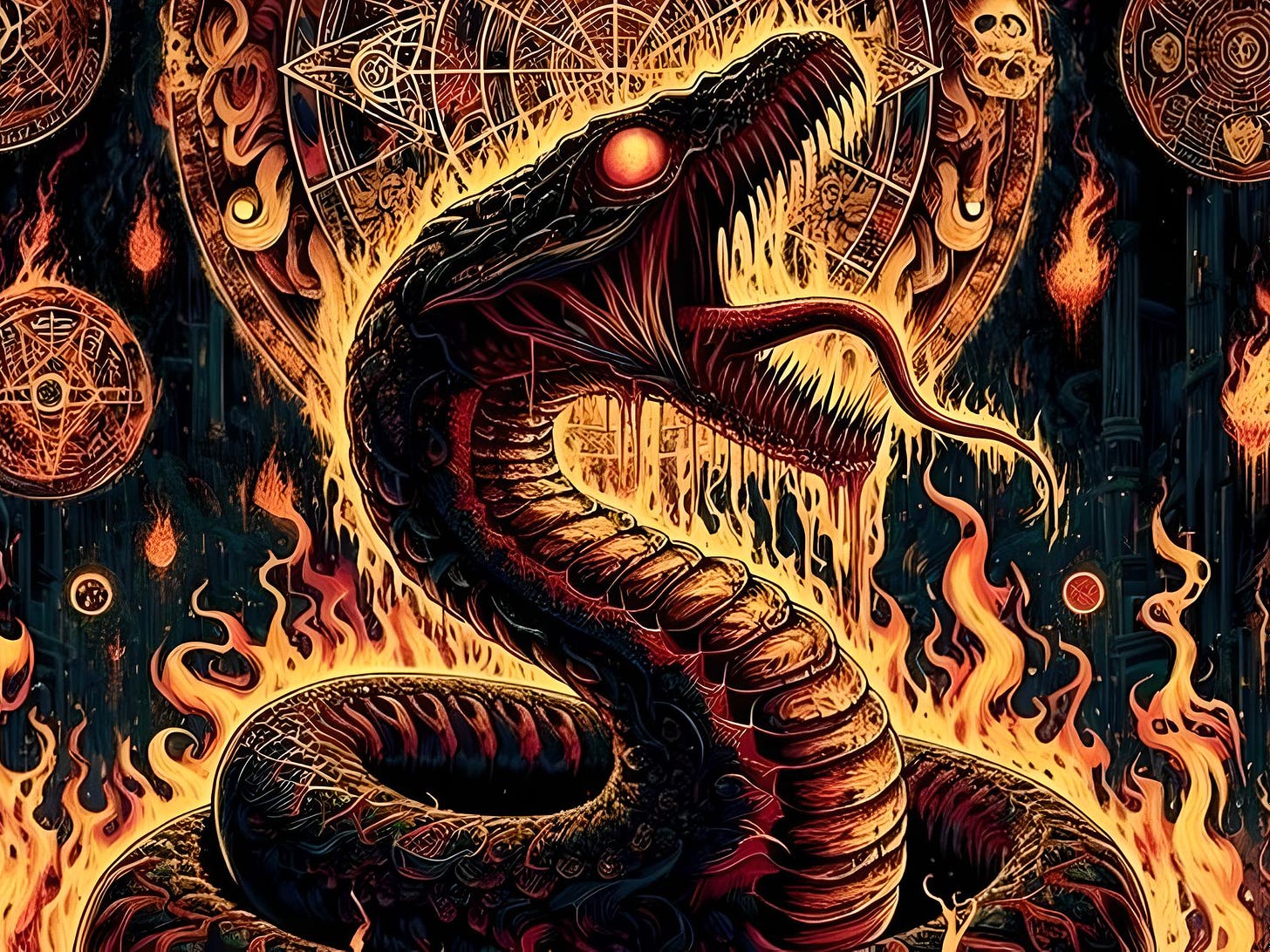
Clinton against Kekistan
Traditionalists like René Guénon and Charles Upton saw snake cults as expressions of Satanic counter-initiation, emphasizing that such clandestine groups exist not only in the Judeo-Christian cultural sphere but all over the world. The Zen Buddhist and former monk Haku Zynkyoku, interestingly a follower of Nazi esotericist Miguel Serrano, views Yamata no Orochi as the driving force behind Western political conspiracies. The British truther David Icke also believes in a plot by such secret orders, citing the 1833 book The Worship of the Serpent by British writer John Bathurst Deane. Kenneth Grant, a disciple of the occultist Aleister Crowley, developed theories about ancient serpent cults, connecting them with black magic like the Qliphothic Kabbalah (which aims to estrange humanity from God), as well as with the surrealist art of painter Austin Osman Spare and H. P. Lovecraft’s horror stories about demon gods.
In certain online forums, even the 2016 U.S. election was elevated to a battle between the snake and the frog. Internal emails revealed that Hillary Clinton had questionable ties to occult artist Marina Abramović, who also conducted performances with snakes. On the other hand, Donald Trump was backed by a digital army, which rallied around the meme frog Pepe to support the Republican.
Pepe, in turn, is often identified with the ancient Egyptian god Kek. This led to the creation of the virtual Republic of Kekistan, whose followers are in constant conflict with so-called normies (normal people) and SJWs (Social Justice Warriors). The battle between snake-worshipper Clinton and frog-leader Trump, they say, has made the tale of the gallant Jiraiya a reality. The outcome remains open.

The meme frog Pepe as Trump.
The Midgard Serpent
In Germanic mythology, the Midgard Serpent Jormungand encircles the world. Born of Loki, the god of fire and trickery, and the giantess Angrboda, it is one of the great enemies of the Aesir and humanity, along with Hel, the goddess of darkness, and the wolf Fenrir. The great serpent, biting its own tail and symbolizing the eternal cycle, is not unique to Norse mythology. In ancient India, it was known as Ananta (the Infinite), in Egypt as Apophis, as Quetzalcoatl to the Maya, and as the Rainbow Serpent to the Australian Aborigines. In the Bible, Satan is also considered the great world serpent, who will be bound for 1,000 years through the work of redemption.
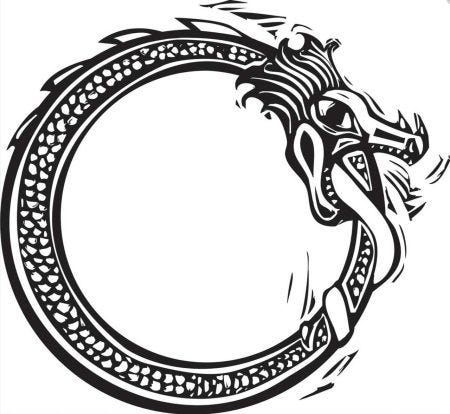
Jormungand: In the end times of Ragnarok, it will writhe in the sea and flood the coasts with waves.
